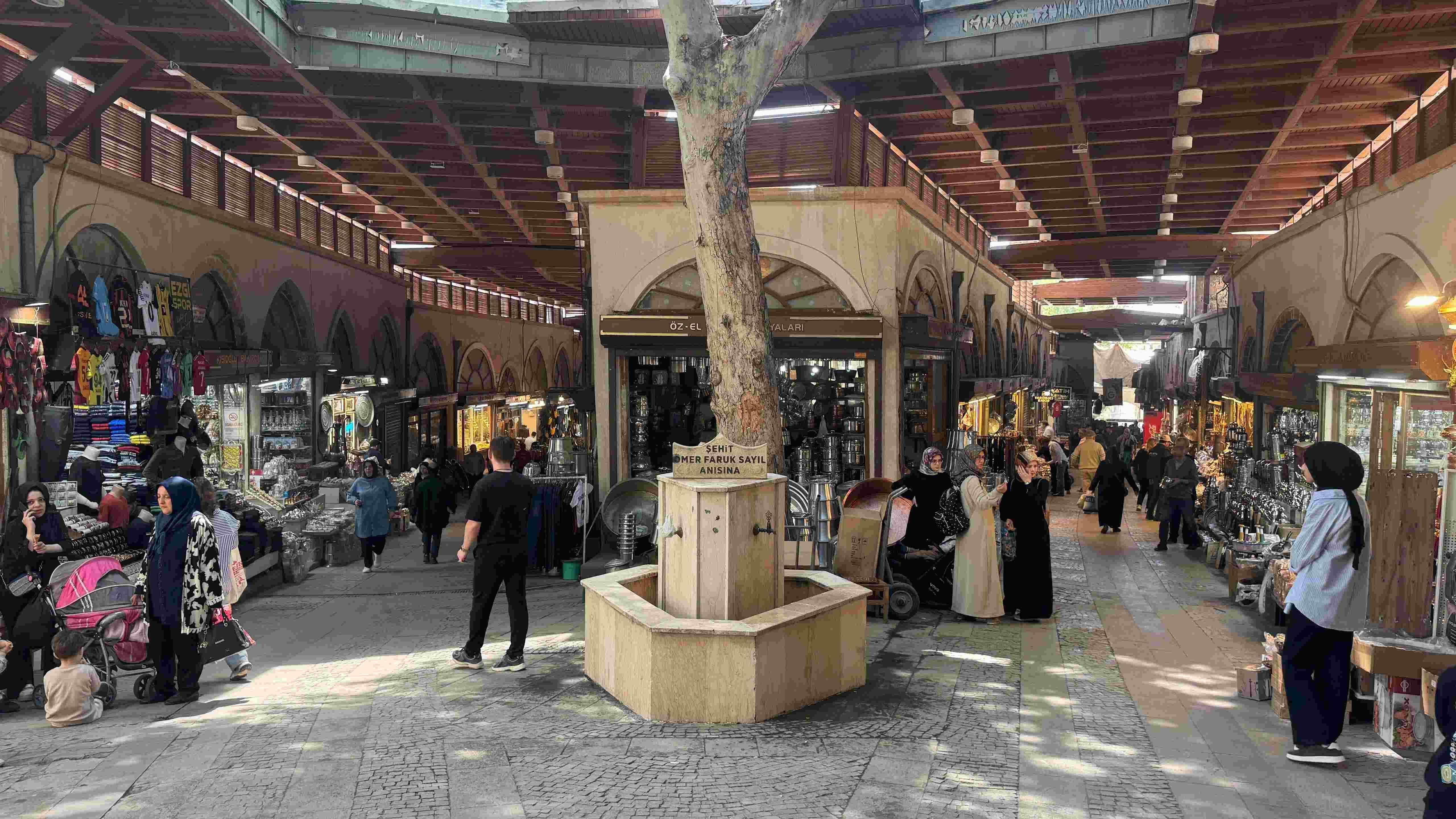
Kahramanmaraş, which made its mark in history with the resistance it showed during the War of Independence and stands out with its rich cuisine, poetry tradition and natural beauties, aims to make its potential in the field of culture and tourism more visible day by day.
Located at the intersection point of the Eastern Mediterranean and Southeastern Anatolia, the city draws attention with its historical texture and natural riches. The city hosts a wide cultural heritage extending from gastronomy to literature.
Having the traces of a civilization of thousands of years, is becoming one of the region’s rising culture and tourism destinations with its museums, castles, plateaus and local flavors, leaving behind the effects of the Feb. 6, 2023 earthquakes.
The Eshab-ı Kehf Complex and Cave are located in the Afşin district of the city, which is included in the UNESCO Creative Cities Network. It is believed that the story of the "Seven Sleepers" mentioned in the Surah al-Kahf of the Quran took place in this region.
The structure, which is one of the few places that contains shared narratives in both Christianity and Islam, also attracts great attention in terms of faith tourism.
The complex part of the structure, which includes sections such as a mosque, madrasa, zawiya, and tomb and is on the UNESCO World Heritage Tentative List, was built in the 13th century by the Anatolian Seljuk Sultan I. Alaeddin Keykubad.
Başkonuş Plateau, located about 50 kilometers from the city center of Kahramanmaraş, stands out as one of the city's important nature tourism destinations.
The region, which is a stopover for migratory birds, also contains many endemic plants, especially hyacinths and orchids. In the area, there are accommodation facilities, countryside restaurants and hiking trails.
Menzelet Dam Lake on the Ceyhan River is one of Türkiye’s important hydroelectric dams with a height of 105 meters. The surroundings of the lake are preferred especially in the summer for picnics and nature walks.
Boat tours organized in the summer on the lake offer visitors both a refreshing break and enjoyable moments accompanied by natural scenery.
Ali Kayası Glass Terrace, which reveals the natural beauties of Kahramanmaraş and offers a unique view, provides visitors with enjoyable moments with its restaurant, walking and children's play areas.
The terrace, located in the Bulutoğlu neighborhood 20 kilometers from the city center and overlooking Güredil Castle and Menzelet Dam, is situated 160 meters above the dam lake.
The Germanicia Mosaics, found by chance during a foundation excavation in 2007 in the Dulkadiroğlu district, are one of the remarkable values of Kahramanmaraş in terms of archaeological and cultural heritage.
The mosaics, determined to belong to the ancient city of Germanicia, date back to the fourth–fifth century A.D. In the excavation works started in 2009, a 300-square-meter mosaic layer was unearthed and in 2018 it was opened to tourism as an archaeological site.
There are mythological scenes, depictions of nature and figures from daily life in the mosaics, which are undergoing protection, excavation and restoration works.
Kahramanmaraş cuisine
Kahramanmaraş's gastronomy culture is quite rich with a variety of local products and the preservation of traditional recipes. Maraş ice cream, tarhana, "eli böğründe," stuffed meatballs, meatballs in broth, walnut sausage and pastry are among the prominent delicacies of the city.
Gastromaraş, Mürüvvet’s Kitchen and the Culinary Academy were established to promote the city’s local flavors, brand geographical indication products and develop gastronomy tourism.
Mürüvvet Alparslan Nazlı, the founder of the academy and also the author of a book titled "Maraş Flavors," said that Kahramanmaraş has a cuisine suitable for everyone's palate.
Nazlı noted that the nature of the city is still unspoiled and that, in this sense, the cheese, honey, jam and olives produced in the region are natural and delicious.
In Kahramanmaraş, wood carving found its place especially in traditional architectural elements such as mosque, mansion and tomb doors.
These works, adorned with geometric patterns, calligraphy and motifs made with hand craftsmanship, attract attention with their functional and artistic aspects.
Although their number has decreased today, this tradition, continued by master artisans, is kept alive especially in small workshops inside the bazaar.